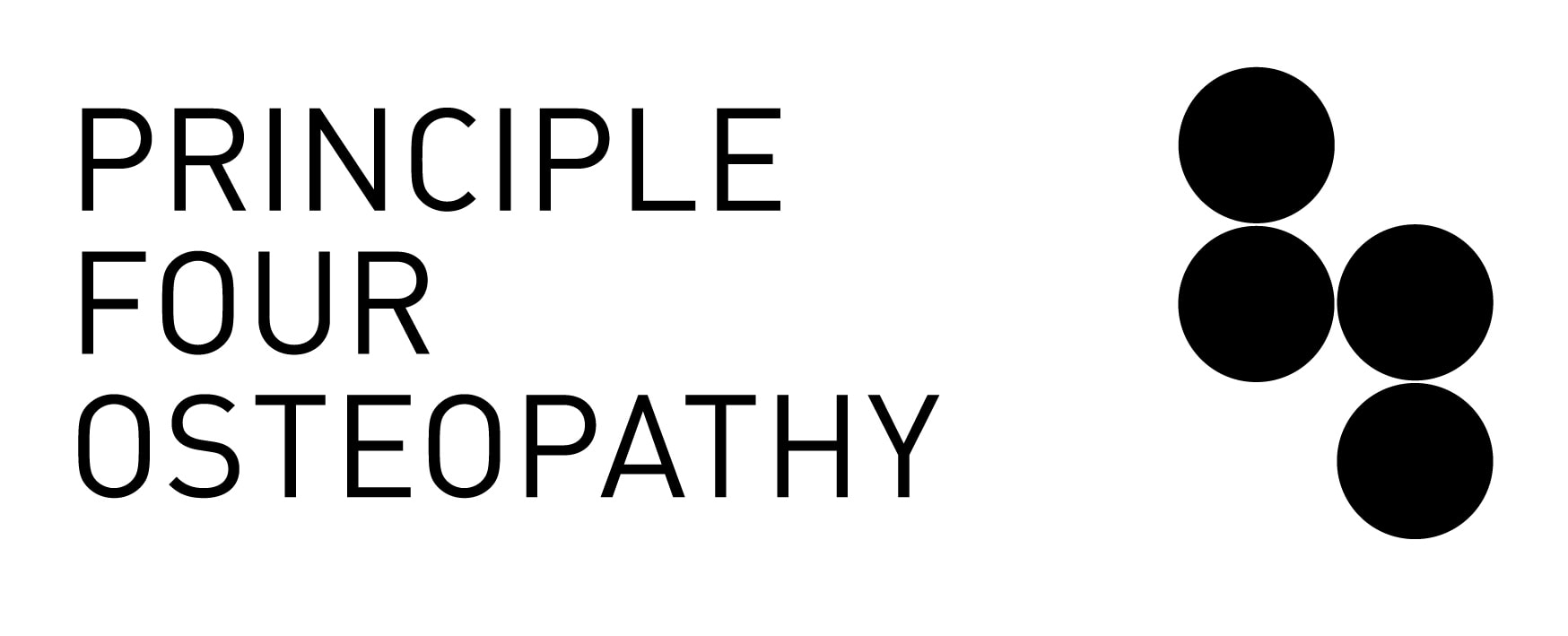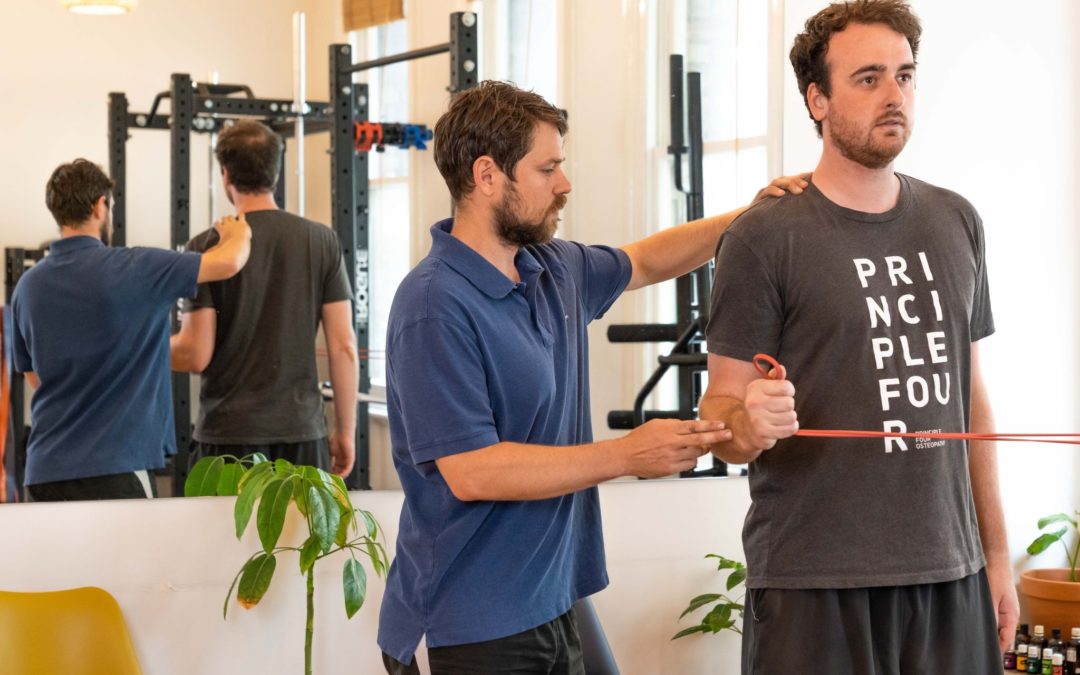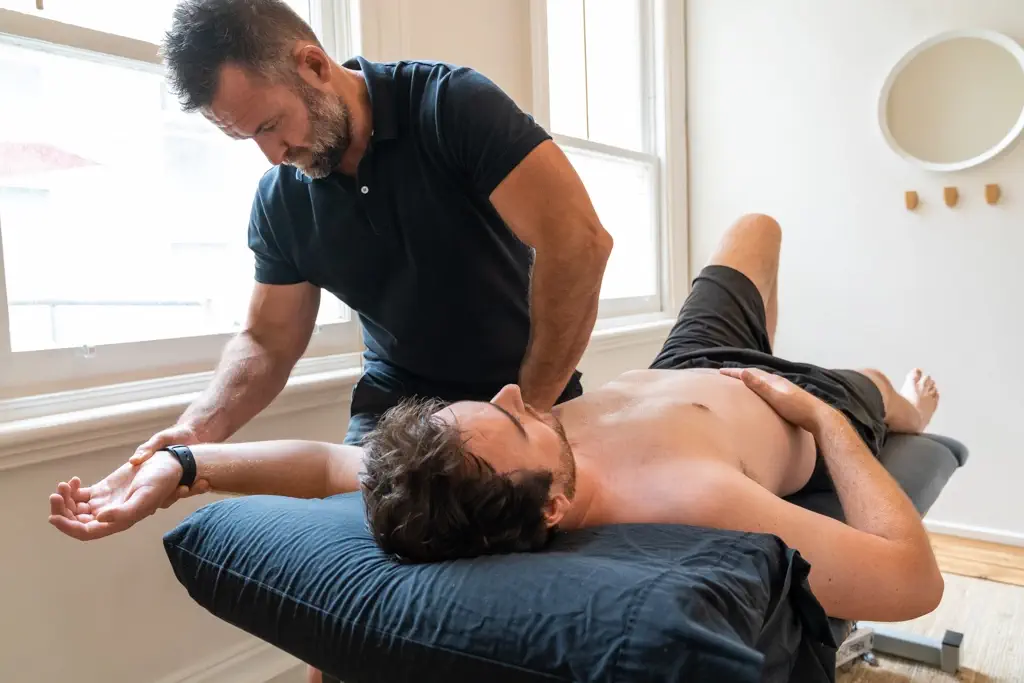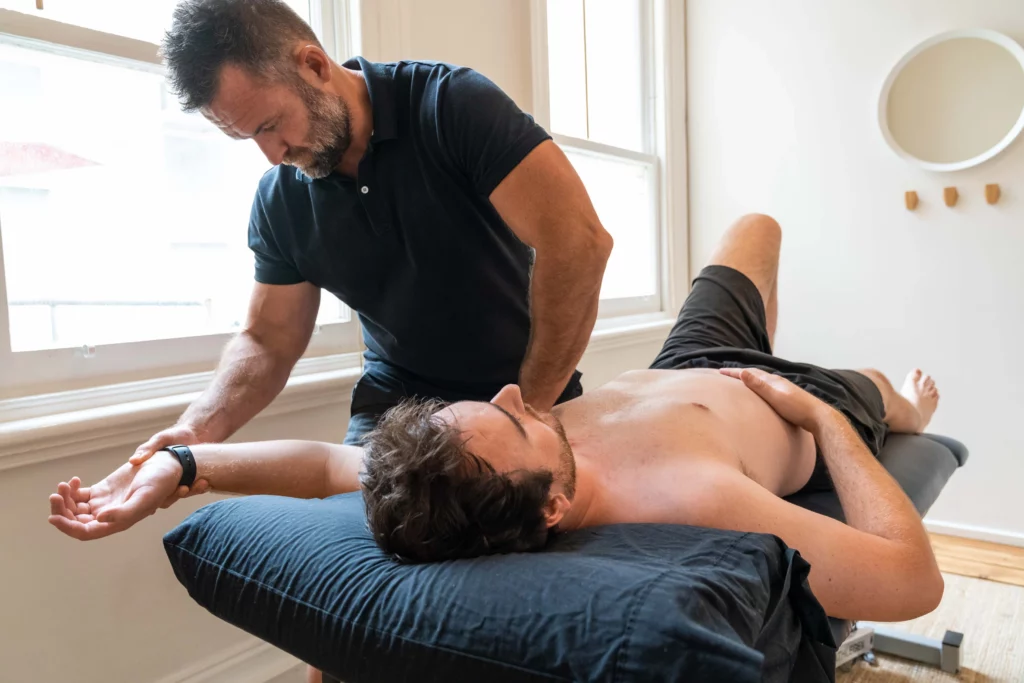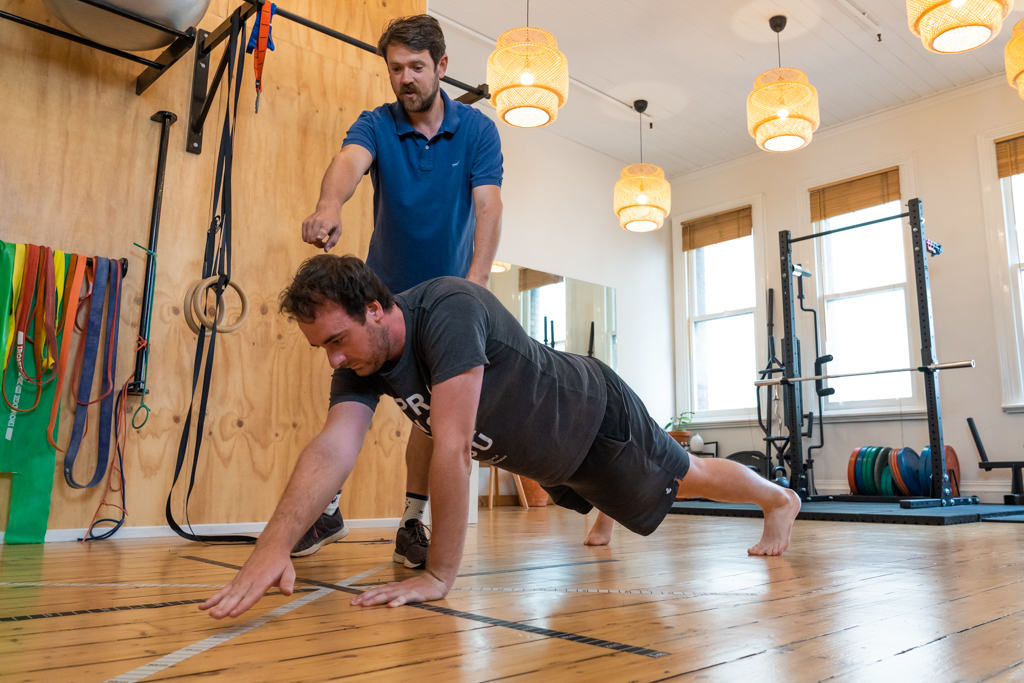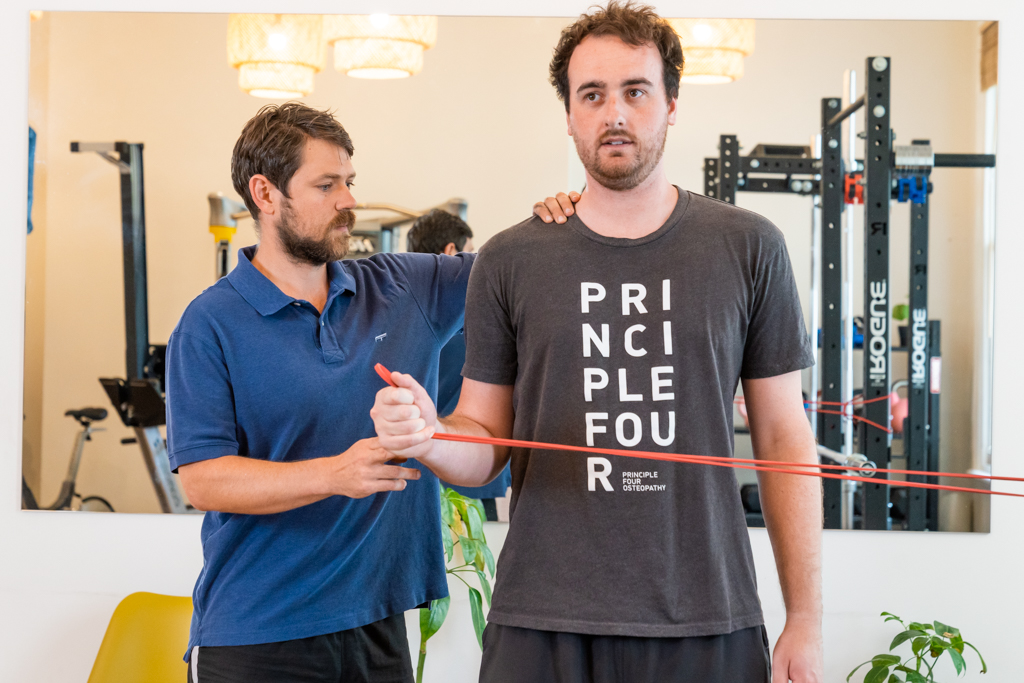How Osteopaths Can Help Treat Shoulder Pain
Table of Contents
- Introduction
- Common Causes of Shoulder Pain 2.1 Acute vs Chronic Shoulder Conditions
- The Osteopathic Approach to Shoulder Pain 3.1 Hands-On Manual Therapy 3.2 Exercise Rehabilitation and Movement Retraining 3.3 Strength & Conditioning Principles
- Identifying and Addressing Contributing Factors
- Why Choose Principle Four Osteopathy for Shoulder Pain?
- Our Location in Melbourne CBD
- FAQs About Osteopathy and Shoulder Pain 7.1 Can osteopathy help with rotator cuff injuries? 7.2 Do I need a scan before treatment? 7.3 How many sessions will I need? 7.4 Can I keep training during recovery?
- Author
Introduction
Shoulder pain is one of the most common and functionally limiting musculoskeletal complaints. Whether it’s a sharp pain when lifting, a dull ache that disturbs sleep, or stiffness after exercise, it can significantly affect your daily life.
At Principle Four Osteopathy, we use a comprehensive approach to diagnosing and treating shoulder pain that goes beyond just hands-on therapy. Our practitioners combine osteopathic manual techniques with exercise rehabilitation, strength and conditioning, and ergonomic education to help you recover fully and prevent recurrence.
Common Causes of Shoulder Pain
Shoulder pain can arise from sudden injuries or develop gradually due to overuse, poor posture, or compensatory movement patterns.
2.1 Acute vs Chronic Shoulder Conditions
- Rotator cuff tendinopathy or tears
- Shoulder impingement
- Frozen shoulder (adhesive capsulitis)
- AC joint irritation or sprain
- Referred pain from the neck or upper back
- Labral injuries or instability issues
Accurate assessment is key to determining the root cause of your pain and developing an effective treatment strategy.
The Osteopathic Approach to Shoulder Pain
3.1 Hands-On Manual Therapy
Osteopaths are skilled in:
- Soft tissue techniques for the rotator cuff, deltoid, traps, and thoracic region
- Joint mobilisation for the shoulder, scapula, and thoracic spine
- Myofascial release and stretching techniques
- Taping strategies for support and pain modulation
These manual techniques help reduce inflammation, restore range of motion, and ease muscular tension.
3.2 Exercise Rehabilitation and Movement Retraining
We don’t just focus on symptom relief—we focus on function. Our osteopaths prescribe targeted rehab exercises to:
- Improve scapular control and shoulder blade mobility
- Restore rotator cuff strength and joint stability
- Reinforce healthy movement patterns for daily or athletic activities
3.3 Strength & Conditioning Principles
Our osteopaths are trained in strength and conditioning and use these principles to:
- Progressively load the shoulder during rehab
- Bridge the gap between injury recovery and return to performance
- Prevent recurrence through improved muscular capacity and movement efficiency
This approach is especially valuable for athletes, gym-goers, and physically active individuals.
Identifying and Addressing Contributing Factors
We assess not only the shoulder, but also the neck, thoracic spine, rib cage, posture, and even your work or training setup. Many shoulder issues stem from poor posture, lack of upper back mobility, or repetitive strain at work or during exercise.
We may also:
- Review workstation ergonomics
- Recommend mobility drills for upper spine
- Advise on lifting technique or gym modifications
Why Choose Principle Four Osteopathy for Shoulder Pain?
Our Melbourne CBD osteopaths are uniquely positioned to support people dealing with shoulder pain, whether it’s work-related, sport-induced, or lifestyle driven. Our practitioners provide:
- A clear diagnosis and treatment roadmap
- A blend of hands-on therapy and active rehab
- Strength and movement coaching
- Workplace and sport-specific modifications
We don’t just treat your shoulder—we help you understand it, rebuild it, and get back to doing what you love.
Our Location in Melbourne CBD
Principle Four Osteopathy is conveniently located at:
Level 4, 178 Collins Street, Melbourne VIC 3000
Close to public transport and major CBD offices, our clinic is accessible for professionals, students, and athletes across Melbourne.
FAQs About Osteopathy and Shoulder Pain
Can osteopathy help with rotator cuff injuries?
Yes. Osteopaths can assess and treat rotator cuff strain, tendinopathy, and tears using manual therapy, exercise rehab, and load progression.
Do I need a scan before treatment?
Not always. Our osteopaths can often diagnose and treat shoulder pain without imaging. If scans are needed, we’ll refer you to your GP or specialist.
How many sessions will I need?
This depends on the severity of your condition and your goals. Some issues improve within a few sessions, while others require longer-term rehab.
Can I keep training during recovery?
Usually yes. We’ll help you modify your program so you can maintain activity while your shoulder heals safely.
Author
Heath Williams
Principal Osteopath | Workplace Health Consultant | Educator
Heath has extensive experience treating shoulder pain and upper body dysfunction in athletes, office workers, and active individuals. He integrates manual therapy, functional rehab, and workplace ergonomics to deliver lasting outcomes.
